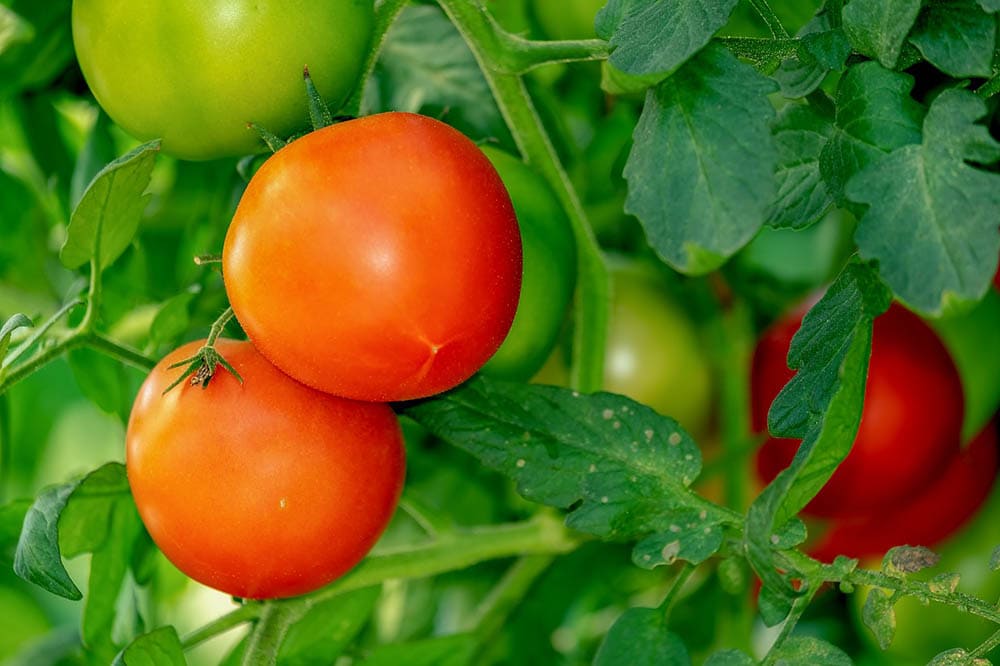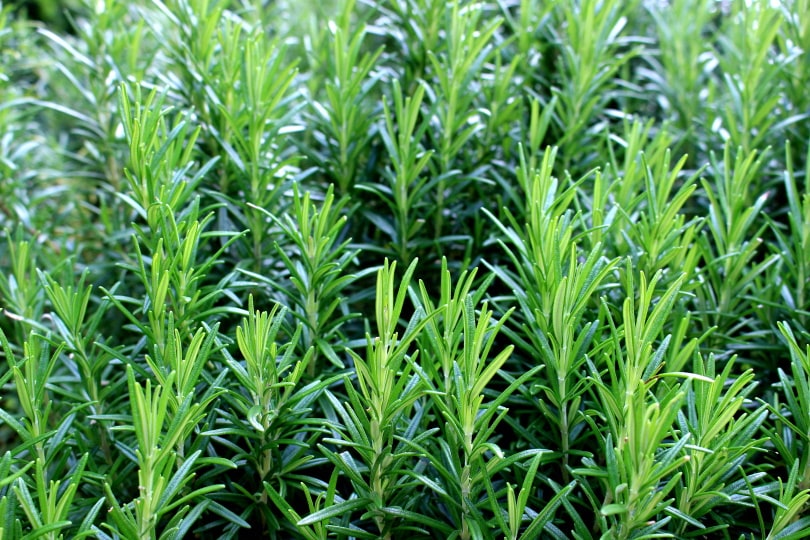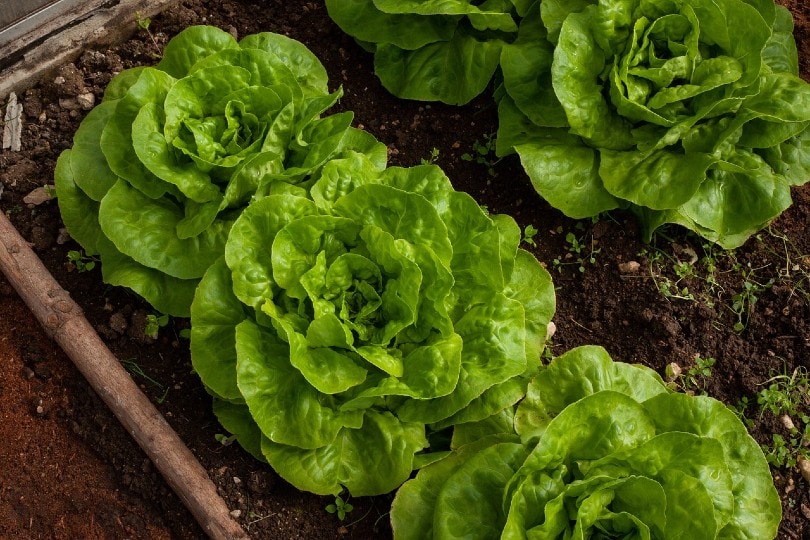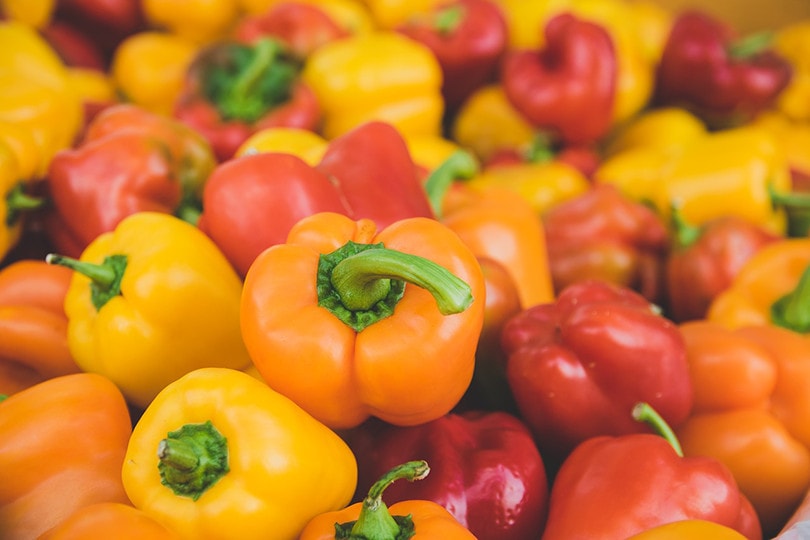7 Easiest Edible Plants to Grow in Your Garden (With Pictures)
-
Ed Malaker
- Last updated:

If you are new to gardening, it can seem like a daunting task to turn an area of your property into a group of plants that will produce a large harvest every season. But as long as you move slowly and try to learn as much as you can, you will be fine. Instead of choosing random plants or your favorites to grow, though, it can be helpful to first select an assortment of easy-to-grow plants so you can get the experience that you need without sacrificing a good harvest. If this sounds interesting to you, keep reading as we provide you with several examples of easy-to-grow edible plants.
The 7 Easiest Edible Plants to Grow in Your Garden
1. Strawberries

| USDA Hardiness Region: | 3–10 |
| Requirements: | Well-drained soil |
Strawberries are easy to grow, and they taste great, making them popular among new gardeners. You can even grow these agreeable plants in pots on your patio and in your home if there’s plenty of sunlight. They’ll need rich, well-drained soil to produce the biggest harvest.
2. Onions

| USDA Hardiness Region: | 3–9 |
| Requirements: | Full sun |
Onions are amazingly easy to grow in your garden as long as you give them plenty of sunlight. Onions are resistant to insects, making them a great choice for new and experienced gardeners. They also last quite a while after you pick them, and you can extend their shelf life by placing them in the fridge.
3. Potatoes

| USDA Hardiness Region: | 2–8 |
| Requirements: | Insect-free soil |
An easy-to-grow edible plant that you could put in your garden is a potato. Potato plants need to grow in warm weather, nutritious soil, and insect-free dirt to produce the largest harvest. They’re also easy to maintain because you don’t need to water them until the soil is dry to the touch about 1 inch down. The hardest part about growing potatoes is that it can take a while before receiving any vegetables.
4. Herbs

| USDA Hardiness Region: | 3–10 |
| Requirements: | Plenty of sunlight with partial shade |
Herbs are popular among many new gardeners because they grow easily, and you can start them in pots indoors to grow all year long. There is a huge assortment of herbs to choose, so you’re not stuck growing something that you don’t like to eat. To grow herbs quickly, make sure they get plenty of sunlight with partial shade.
Related Read: Can You Grow Cilantro Indoors? Tips, Tricks, and How to Guide
5. Tomatoes

| USDA Hardiness Region: | 4–9 |
| Requirements: | Warm weather |
Tomatoes are fantastic to grow when looking for easy and edible plants to add to your garden. There are many varieties, so you can choose from small cherry tomatoes to large beefmaster tomatoes for use on hamburgers. Tomatoes like to grow in hot weather, so they will need plenty of sunshine and grow best in the summer, but they don’t require much maintenance and will start producing edible tomatoes fairly quickly.
6. Lettuce

| USDA Hardiness Region: | 4–9 |
| Requirements: | Cool weather |
Lettuce is an easy-to-grow plant that produces quite a large supply of food. You can pick the leaves, and they will continue to regrow as long as the temperature stays below 80 degrees Fahrenheit. If the weather gets too hot, a stem will start to grow out of the center of the plant. This term will change the flavor of the leaves and cause them to become bitter.
7. Peppers

| USDA Hardiness Region: | 3–13 |
| Requirements: | Warm weather |
Peppers enjoy warm weather, and the hotter it gets, the faster they will grow, so they are perfect for summer. These tasty vegetables are also resistant to insects, so you won’t need to use pesticides or any other chemicals to receive a good harvest
How Can I Ensure a Good Harvest?
The best way to ensure a good harvest from your garden is to use a zone map to find out your growing zone. Once you know what zone you live in, most seed packages will tell you the best time to put that specific type of plant in the ground so it will grow. Planting too early or too late will prevent you from getting the maximum harvest. Many plants also have other specific requirements, like well-drained soil or plenty of sunlight. Following the instructions closely on the seed package will improve the growth rate and harvest size.
Will I Need to Start Plants Inside My Home?
In many cases, it will be a good idea to start the seeds in the home several weeks before you put them in the ground. It’s especially important for plants that like warm weather, like peppers, because the cold outdoor temperatures of early spring can stunt their growth or even kill them. By starting the plants indoors, you can keep them at a safe temperature until any threat of frost or cold weather passes.
Conclusion
All the plants on this list are easy to grow and eat almost anywhere in the United States. However, if you live in a cool area, you will be better off choosing a plant like lettuce to start with, while people in hot areas might choose to start with a tomato or pepper plant. Selecting a suitable plant means you are less likely to have a problem, which is important when you are getting started.
You may also like: 10 Companion Plants for Rosemary (with Pictures)
Featured Image Credit: Couleur, Pixabay
Contents

